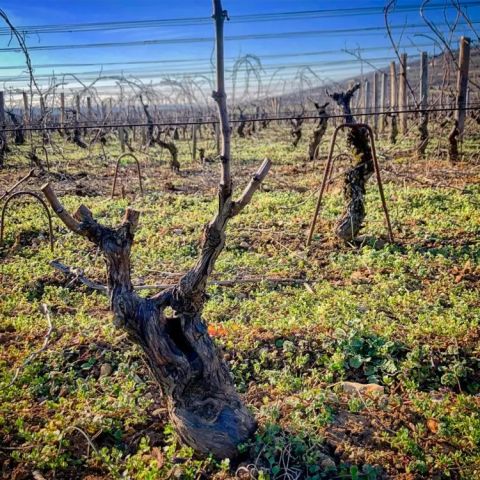21 March 2019 A look at the 2017s and 2016s from the much-admired new generation at Arnoux-Lachaux.
Slightly sunburnt and with a big smile, Charles Lachaux was in London this week to show off his 2017s at UK importer Corney and Barrow's offices. He confessed to having been skiing at the weekend but he spends so much time in the vineyard that he doesn't need snowy slopes to get a good colour.
Founded in 1858 as Domaine Robert Arnoux, the domaine was renamed in 2008 to reflect the fact that Pascal Lachaux, husband of Florence Arnoux, was running the estate. Sixth-generation Charles has since taken the helm, while still working closely with his father. This map shows the location of their current 14.5 ha (36 acres) of enviable vineyard holdings.
Mentored by Lalou Bize-Leroy, Charles has followed her in many of his vineyard practices, if not biodynamics, though he describes his family's approach as '90% organic'. One key contributory factor in the delicate, fragrant style of his wines is that he postpones, and in some cases has completely stopped, trimming the canopy shoots, even the longest. With a canopy height of 170 cm (5 ft 6 in), he achieves a higher leaf-to-fruit ratio than is typical in Burgundy. This allows the fruit to ripen earlier at modest alcohol levels: the ultimate in freshness. To avoid shading the fruit, the shoots are tucked back into the trellis when they start to overhang. Charles explained that this also signals to the roots to continue to grow deeply, whereas trimming can have the opposite effect.
Another huge and highly skilled task he and his team are undertaking is curetage, cutting the dead wood out of the old vines (see below). This is in part to remove any esca infection but also to prevent it in those vines not yet infected. He explained how the process, which involves electric saws of various sizes, takes a long time and serious concentration. If he does 10 hours straight, he can cover 180 vines in one day. Even old vines come back with renewed energy and health if this is done well, apparently. They are also converting all their vines to a training system known as Guyot Poussard, which respects and balances the sap flow of the vine, involves smaller pruning wounds (the most common infection site) and keeps the fruiting canes closer to the head of the trunk – all factors that promote vine health and better disease resistance at a time when trunk diseases are rampaging through the world's vineyards. (Dr Richard Smart, viticulture editor of the Oxford Companion to Wine, believes that trunk diseases are the next phylloxera.)
Another important change has been to weed with a hoe, or a hand-held plough, rather than use a tractor and attachment, avoiding compaction and encouraging microbial life and good structure in the soil. They are apparently experimenting not only with very high density planting (20,000 vines/ha) in one very small part of Aux Reignots that is being replanted but also with bush vines.
Lachaux's approach to canopy management has consequences in the cellar: the berries tend to be small and thick-skinned and need only gentle and quick extraction during fermentation. In 2017, for example, the ferments lasted just 10–12 days and they were even quicker in 2018. When I was in Burgundy at the end of last year, I heard many stories of difficult and slow fermentations because of high sugar in the grapes. None of the Armoux-Lachaux 2018s is more than 13% alcohol, according to Charles. He occasionally chaptalises very slightly later in the ferment if he wants it to continue a little longer.
Charles emphasised teamwork: everyone works both in the vineyard and in the winery. He was expecting to be sent a video later on the day I tasted his 2017s so that the could discuss a particular aspect of pruning that was going on while he was in London. 'It's hard to build a good team', he said, but when you have team members who 'care passionately' about the vines, it is essential to keep them. He talks about going back to the ways of the past, but back 80 or 90 years rather than 20.
Since he has been in charge, Charles has increased the percentage of whole-bunch fermentation, which now varies from 60 to 100%, and reduced the amount of the new oak. Generally speaking it is 30% for the grands crus, 20% for the premiers crus and 10% for the village wines but it is clear there is no recipe and that Charles and his team are as sensitive to the particularities of the wines as they are to the vines.
My drink dates for the 2017s may look a little premature in terms of the starting dates but, to be honest, I could happily have drunk immediately many of the 2017s I tasted, even though they are likely to age beautifully thanks to their balance and harmony.
Julia's tasting notes on the 2017s and Jancis's on the 2016s can be found here.















